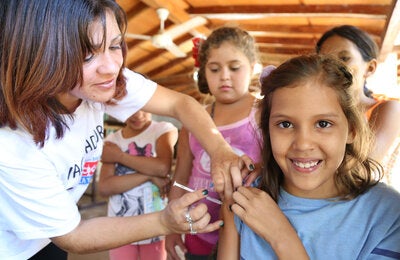
La Paz, Bolivia, October 6, 2023 -Bolivia will implement search activities for trachoma in prioritized communities as a part of the Elimination Initiative in the Region of the Americas.
Trachoma is the leading cause of infectious blindness in the world and affects people living in vulnerable conditions, especially women and children. In the Americas, Mexico eliminated trachoma in 2017, whereas in Brazil, Colombia, Guatemala and Peru, around 5.6 million people are still at risk of the disease.
As part of the initiative to declare the Americas trachoma-free, actions have been initiated to determine whether there are more populations affected by the disease outside of the countries mentioned above. Bolivia is one of the countries where rapid assessments will be carried out to meet this goal.
What is ocular trachoma?
It is an eye infection that is transmitted by direct contact with people infected with the bacteria Chlamydia trachomatis.
Recurrent infections in children living in communities with lack of health access, water and basic sanitation can lead to chronic damage. This may include the inversion of the eyelashes, causing pain, and if left untreated, could lead to visual impairment and blindness by the time they reach adulthood.
What actions will be developed in Bolivia to accelerate the efforts to eliminate trachoma? The alliance and collaboration between the government of Canada and PAHO will develop the following activities over the next five years: surveillance of trachoma in communities where this disease is likely to become a public health problem as a result of prevailing living conditions, and integrated actions to fight blindness, and comprehensive approach in brigades on the ground.
These brigades will coordinate actions with the Health Promotion area, Community and Intercultural Family Health, and Visual Health under the leadership of the General Directorate of Traditional Medicine, under the Ministry of Health and Sports of Bolivia, and the Bono Juana Azurduy.
Surveillance of trachoma will provide an opportunity to move toward integrated approaches to the visual health of populations living in vulnerable conditions.
With the implementation of those activities, the country will confirm the presence or absence of trachoma in the prioritized communities. This evidence will make it possible to determine the actions to be implemented and promote integrated eye health.




